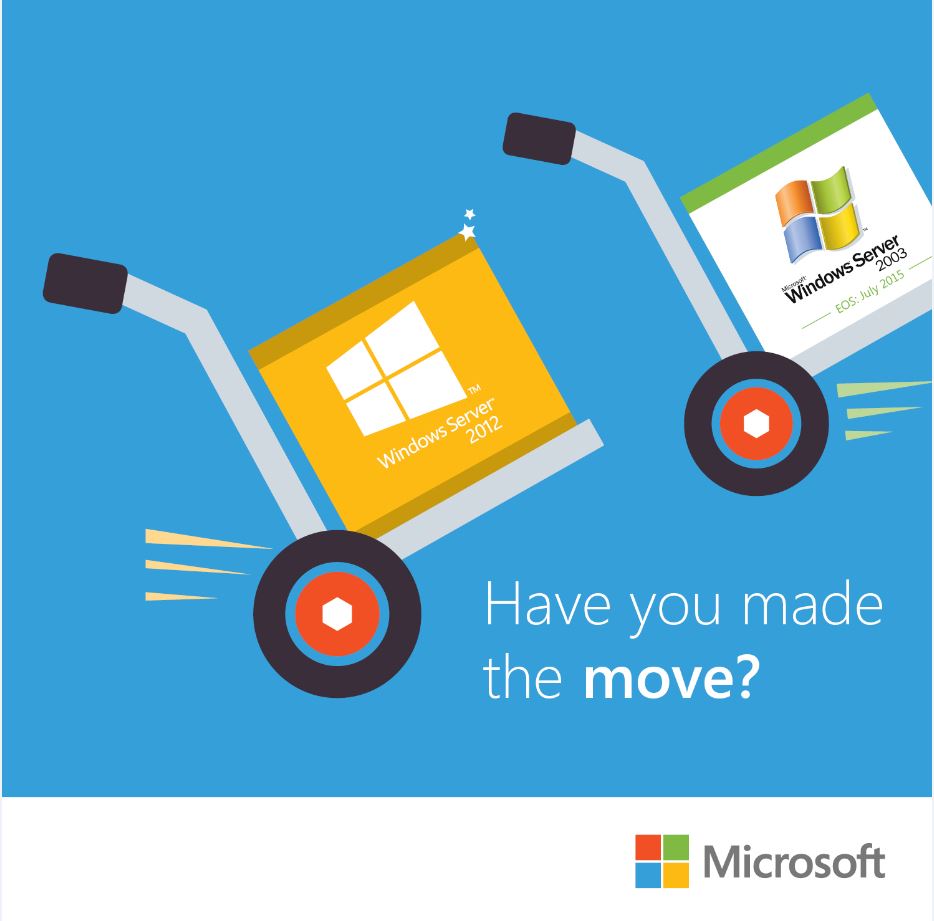Windows Server 2003 support comes to an end, opens up new opportunities for SMEs
Posted by Tareq Hijazi, Regional Director – Microsoft Gulf, Small and Mid-market Solutions and Partners (SMS&P)
I
With this in mind, Microsoft is completely ending our support for Windows Server 2003 and Windows Server 2003 R2 on 14 July this year, following the end of mainstream support in July 2010. This is part of our support lifecycle in place to encourage our users to migrate to one of our latest solutions and take advantage of modern technology for compliance, hybrid cloud infrastructure and innovative applications.
So, what does the end of support for Windows Server 2003 mean? After 14 July, Microsoft will no longer develop or release any updates, which can increase security risk, result in slower performance and cause potential down time of business applications. The costs of maintaining your legacy servers can also add up quickly, while your business will likely fail to meet most industry-wide compliance standards and regulations, which increases the risk for your daily business transactions.
There’s no need to panic, though – because with change comes opportunity. Apart from ensuring that your servers remain protected with continued security updates and patches, migrating from Windows Server 2003 could signal the beginning of a new stage for your business, giving you new capabilities no matter how big or small your operations are. A cloud platform like Azure, for example, provides you with a range of benefits, including increased backup capacity, enhanced disaster recovery capabilities, consistent compliance with regulatory demands and access to the most modern applications. In addition, it reduces server sprall and boosts employee productivity by allowing them to work from wherever they are. All these features can help your business move faster, reduce costs and ultimately be more productive.
Of course, as you begin the migration process, you need to ask yourself what solution makes the most sense for your business. You have a few months before Windows Server 2003 support ends, so take a moment and use one of our tools to discover what applications and software you have running on the outdated technology. Then create a transition plan to make your migration process as smooth as possible, and choose where you would like to move your current workloads and applications – whether to a new server like Windows Server 2012 (R2) or to a cloud platform like Microsoft Azure. Finally, there are several vendors that offer do-it-yourself tools to assist with the migration, such as Dell ChangeBASE, Citrix AppDNA, AppZero, Refresh IT, BlueStripe and Microsoft Services JumpStart for Windows Server 2003. If this all seems a bit daunting, remember that if you have any questions along the way, there are local experts—Microsoft partners—that can assist you with this transition during any step, help you determine what the right choice is for your business and even train you and your staff on the new solution you are adopting.
We are pleased to say that our partners support our move away from Windows Server 2003, understanding the importance of making use of the latest technology. Praveen Thawani, Director at Cyquent Technologies in the UAE, says: “Most of our customers are still running mission critical line of Business Applications on Windows Server 2003, which is a risk with the support ending and rendering it unmanaged in terms of continuous security patching, code support and compliance. We see this as a great opportunity for organisations who have the cloud direction on their minds to consider the very strong and well placed Microsoft Azure platform. Customers who want to continue with the in-premises direction should embark on a plan to upgrade to the latest Windows Server platform.” He continues, “In our eight years of experience as a Gold Certified Partner in the Gulf, the entire process of planning and executing on such a complex and core component of the customer’s environment could take anywhere between three to six months. Compatibility testing of applications is an important step in this process and needs expert partners to assist customers in a smooth transition. Azure can be a lot easier a transition given that new servers and apps can be provisioned in no time. This is an important strategic decision-making overhead and seasoned partners like ourselves can provide that value add to help customers decide.”
Thanks to new technology, it’s an exciting time for SMEs. That’s because many are finding that increased access to new technology—such as cloud and mobile solutions—can provide access to services that were never within their reach before, helping them grow and be more productive.
So if you have been using Windows Server 2003 and haven’t yet begun migration planning, now is the time. We have a range of options to suit your needs, including the new Windows Server, Microsoft Azure, Office 365 and other hosting partners. For advice and assistance, we also have tools and guidance available to help you during the migration process, and our partners are there to assist you along the way.